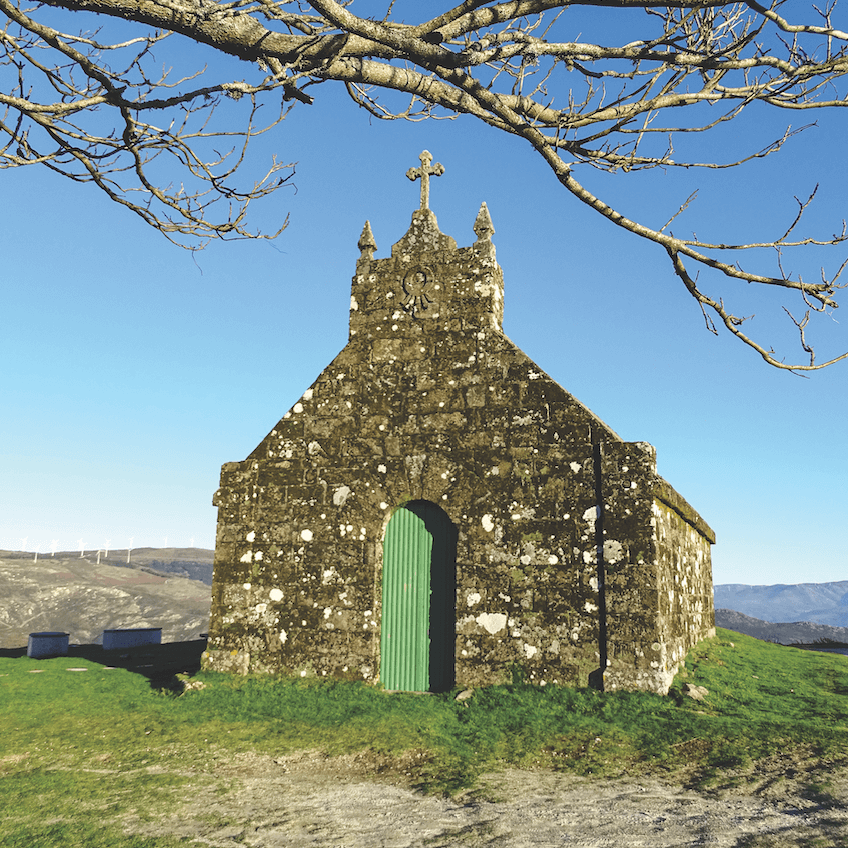Chapel of San Nomedio

On the summit of the mountain of the same name there is a chapel dedicated to San Mamed, whose feast day is celebrated on 7 August. The Virgin of As Neves was also venerated here.
The researcher Rodríguez Otero (2004) states that "the parishes surrounding the mountain came to the festival with their banners and parish crosses, which were received on the different esplanades facing each parish, by those of the chapel's titular parish with a triple crossing and lowering of the two after the ritual genuflections. Rubiós, Batallanes, Vilacoba, Guillade, Ribartemes, Tortoreos were parishes that went up there in procession".
In the pastoral visit of 1528, the chapel was in ruins: "there was a hermitage of St. Mamed in the parish, it has no properties and it is fallen down". In the parish report of 1754, the church had already been rebuilt, and this is also corroborated by Father Flórez in 1767.
In the visit of 1780, it was ordered: "...that the roof be shimmed on the east side and that a new platform be put in place and that the S.S.I. be charged with the punctual observance and fulfilment of all that was ordered in the previous visit...".
(...) The parishes of San Ciprian, San José and San*ago de Ribarteme, adjacent to that of Setados, have on the west side the high mountain of San Mamed, or commonly Sanomedio, on which there is a hermitage, where the effigy of this saint is venerated, and where many Portuguese congregate (...).
Sebastián de Miñano y Bedoya; 1827
In 1852 the historian Ávila y la Cueva noted that Taboexa 'has on a very high mountain a devout and ancient hermitage dedicated to San Mamed (...) whom the common people call San Nomedio'.
The pastoral report of 1854 states that the chapel of San Mamede belongs to the parish and that mass is sometimes celebrated there. It also specifies its measurements, which are "six metres in length and five metres in latitude".
Between 1936 and 1939 the priest in charge of the chapel, José Domínguez Fuertes, refused to denounce to the authorities that its doors were frequently forced open. The parish priest's intention was to protect the an*-Franco fugitives who had le- their homes to defend their lives.
This is what he wrote to the vicar of the diocese in May 1939:
"(...) during the war this was explained as being caused by those who fled into the bush to take shelter in this (the chapel) during the winter storms, but now it does not seem to be the way it was thought (...)".
When the war ended, the priest discovered that those who were forcing the doors of the chapel were pastors from another parish, and not those who had fled. It was then that he filed a complaint.


